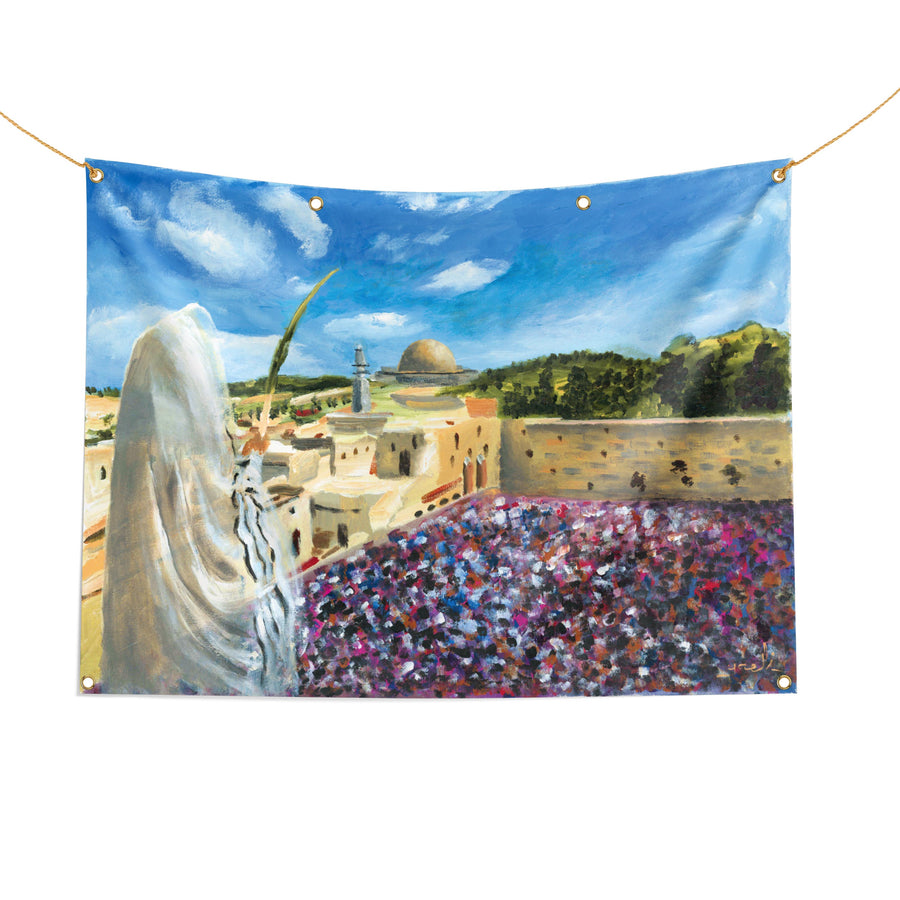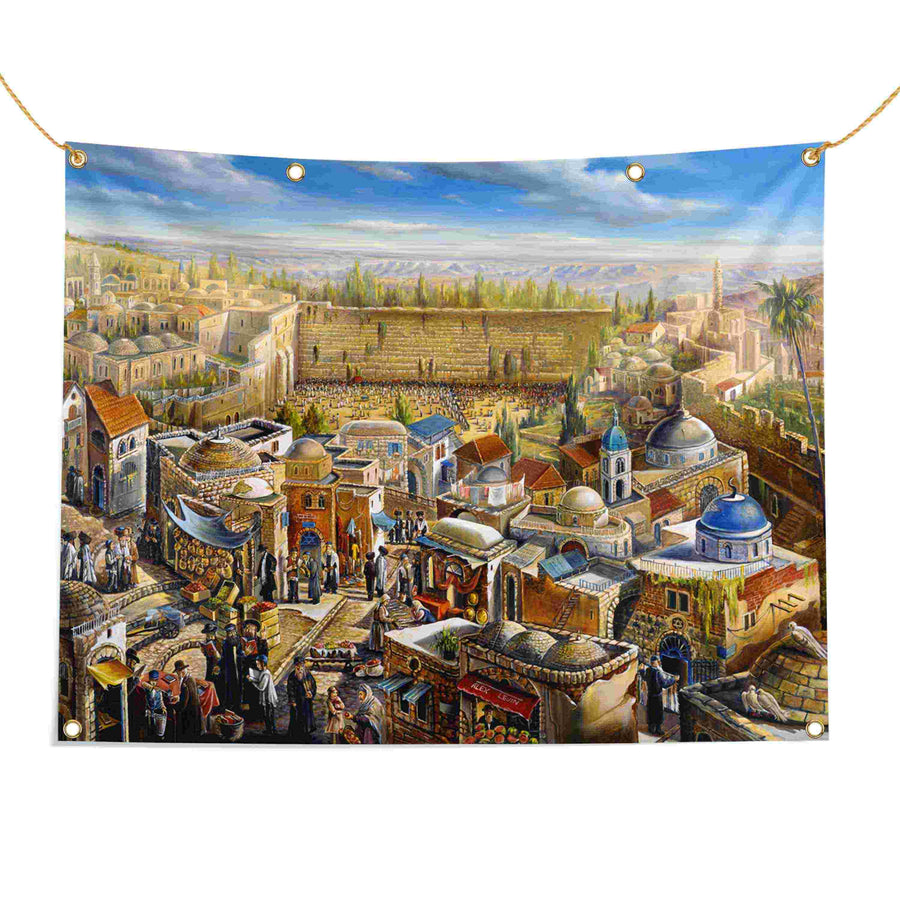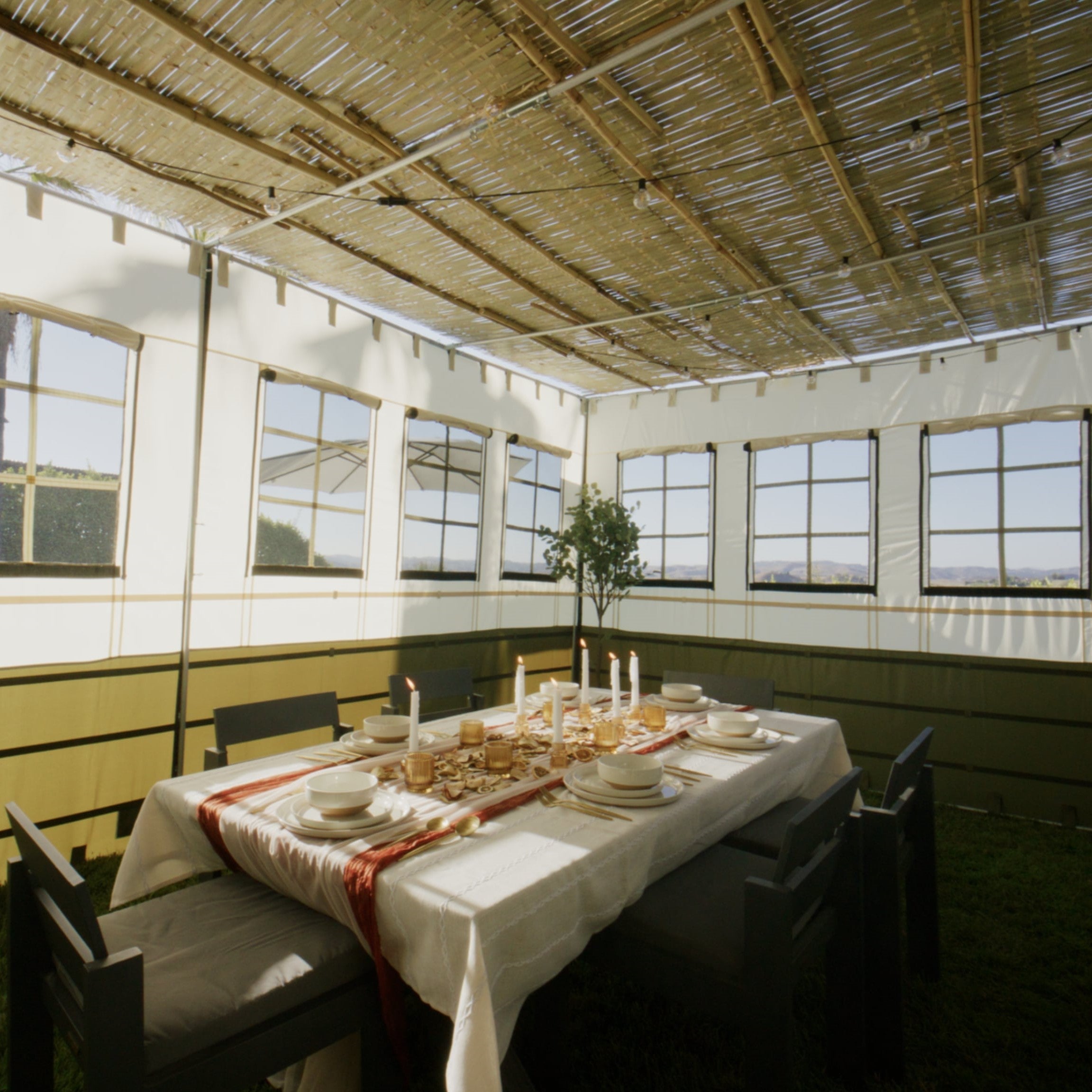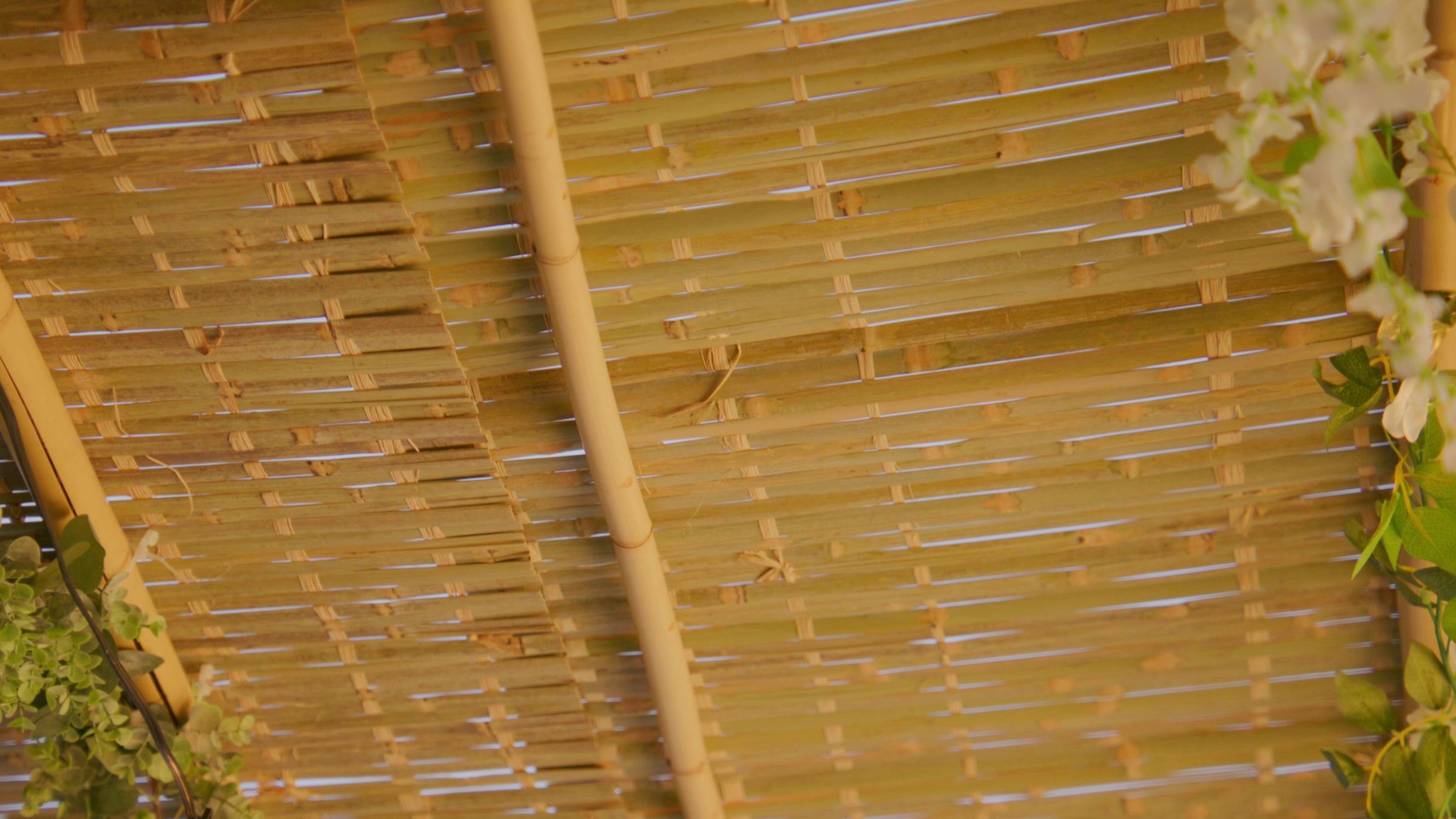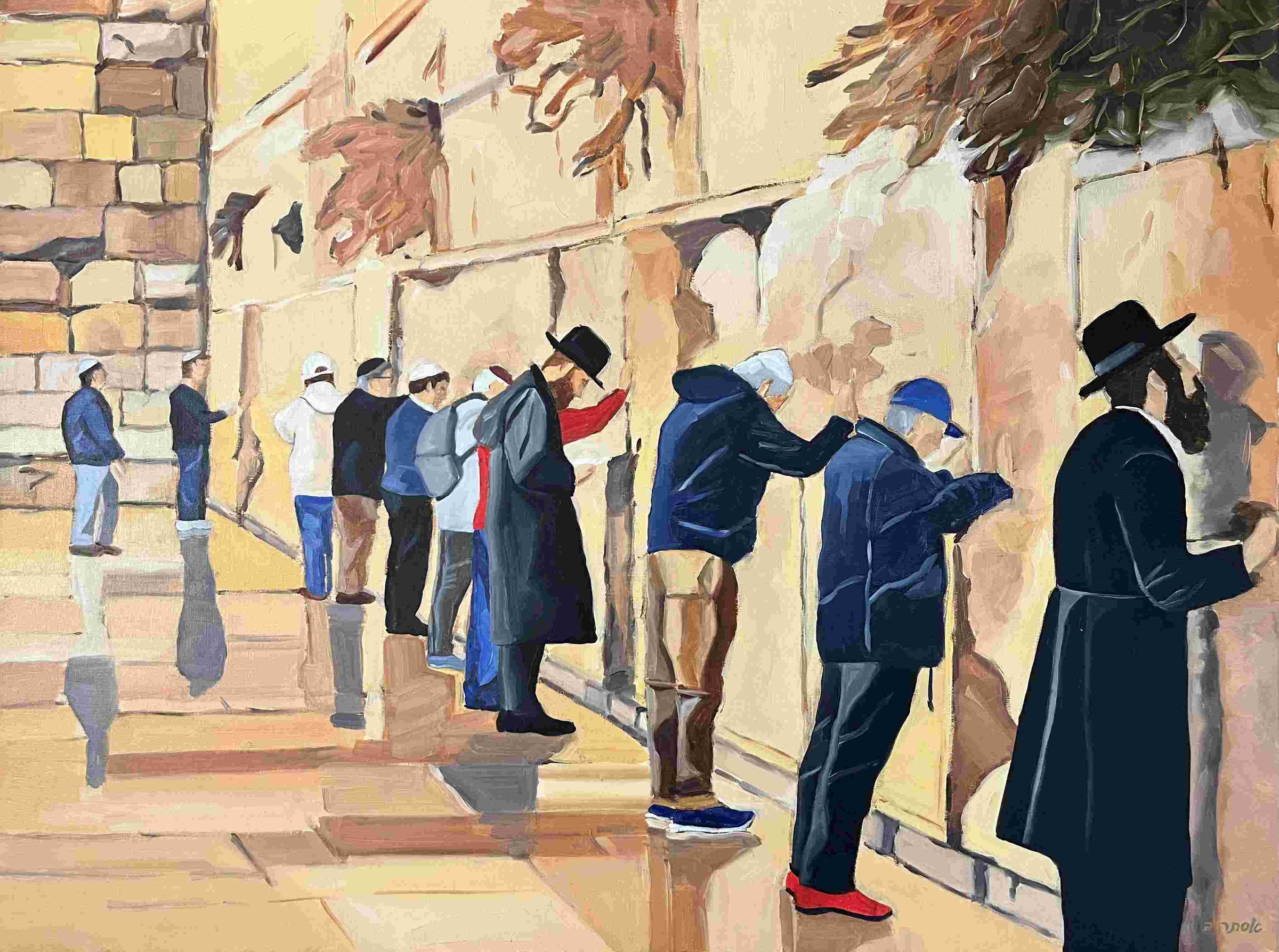

Table of content
Sukkot is the ultimate mitzvah-fest, a week bursting with mitzvot that transform our lives. Every Sukkot, we spend a week holed up in a cozy hut topped off with a roof of branches, light up holiday candles, enjoy festive meals, and juggle the Four Kinds. For the first two days (or one in Israel), we officially declare a melacha -free (work-free) zone, paving the way for the exuberant culmination of the week in Shemini Atzeret and Simchat Torah.
But there’s more! Sukkot is filled-to-the-brim with customs more colorful than your aunt’s yom tov outfit. Join us as we dive into the most famous 8 of these traditions:
Midnight Construction Extravaganza
Sure, you can start building your Sukkah weeks in advance, or even pull an all-nighter the day before, but tradition has a flair for the dramatic. The Code of Jewish Law cites a famous custom that the real fun begins right after Yom Kippur ends. Yes, you read that right – we’re talking schlepping out into the garden…or balcony during the witching hour to start building your Sukkah as soon as Yom Kippur is out!
…but what if you’re not feeling like channeling your inner night owl to haul boards and bang nails? No problem! You can still keep this ancient tradition by formally jumpstarting the construction process and laying out your tools or even just loudly proclaiming your master plan for building your Sukkah. Hammering away at midnight isn’t necessary – enthusiastic intention counts too!
Decking Out the Sukkah
Sukkot is round the corner, and now it’s time to deck out your Sukkah , and turn it into a festive masterpiece! Picture this: your Sukkah decked out with captivating Judaic art, colorful fruit, and décor that could make even the birds jealous. Here are just three classic examples:
Ever heard of the eggshell birds? Some folks get crafty with eggshells and feathers, hanging these quirky “birds” in their Sukkahs. It’s not just for fun; it’s a little reminder. Just like those fancy feathered eggshells, we might look all spruced up on the outside, but are we truly changed on the inside after Yom Kippur, or just hollow shells?
Then there's the apple tradition. Not just one or two apples, but a whopping 91! Why? Because the word “Sukkah” adds up to 91 in numerical value (math nerds, rejoice!). So, get ready to string up 91 apples and turn your Sukkah into an orchard fit for a mathematician.
But if crafting egg birds or hanging a small forest isn’t your thing, you can breathe easy. Chabad has your back. Their custom is to skip the decorations entirely and go for the minimalist-chic look. Instead, they let their high-quality Sukkah materials and lush layer of Schach do all the talking. No glitter required!
The Ushpizin: Sukkot’s Invisible Guests
Ushpizin , Aramaic for “guests,” refers to the seven legendary, invisible guests – the founding fathers of the Jewish people – who drop by our Sukkah, one for each day of the festival. Picture this: Abraham, Isaac, Jacob, Moses, Aaron, Joseph, and David all making cameo appearances in your backyard hut.
Every day, a different one of the Ushpizin leads this ethereal entourage. Some folks roll out the celestial red carpet with special prayers and poems read about the Ushpizin in the Sukkah. Others go all out, lighting seven candles each night to honor these invisible dignitaries and even putting out seven empty chairs for them…although for top-tier hospitality like that, you might want to equip yourself with an expandable Sukkah, to ensure you have enough room for both your celestial and earthly guests.
Many, especially those following Chabad tradition, weave the Ushpizin of the day into their Torah tales and stories, sharing these heavenly highlights with their family and (flesh-and-blood) guests. So, next time you're in the Sukkah, remember you're also entertaining divine company – even if you can't see them!
Sukkah Hopping
“ Sukkah Hopping” turns Sukkot into a festive game of hopscotch in neighborhoods packed with Sukkahs. Children and adults alike bounce from one Sukkah to another, reciting blessings and munching treats before bouncing off to the next stop.
Hoshanot: A Whirlwind of Willow and Prayer
Back in the days of the Holy Temple, every day of Sukkot, the priests would place willow branches around the altar, their leafy heads dipping over the sides. The air would buzz with excitement as the shofar blasted, and the priests circled the altar, chanting, “ Ana Hashem hoshiah na. Ana Hashem hatzlichah na ” (Please, G‑d, bring us salvation. Please, G‑d, bring us success).
On Hoshana Rabbah , the grand finale of Sukkot, they'd turn up the festivity even more, circling the altar seven times. This lively tradition morphed into today's custom: circling the bimah during the morning service, lulav and etrog in hand, reciting heartfelt prayers and psalms.
Hoshana Rabbah and Willow Whacking
Ah, the ancient art of “Willow Whacking!” Hoshana Rabbah, aka. “the Great Hoshana ,” is the day when G‑d puts the final stamp on His Rosh Hashanah and Yom Kippur judgments and decides how many raindrops we’ll get next year. That’s why we take things up a notch with extra prayers and circle the bimah seven times, in remembrance of that very same ritual performed by the priests in the Temple.
On Hoshana Rabbah, we perform the ancient custom instituted by the prophets Chaggai, Zechariah and Malachi, who knew how to spice up a ritual. We grab willow branches, say a special prayer, and give them a good ol' beating on the ground.
According to the Kabbalists, these willows aren't just for show – taking and beating exactly five willow branches sweeten the supernal “five severities.” And these branches are known as…you guessed it. Hoshanot .
But of course, there's more! Some folks also save these branches to fuel their chametz bonfire or bake matzah for Passover.
Dipping Challah Bread into Honey
Sure, dipping challah i nto honey screams Rosh Hashanah, but why stop there? Many folks keep the honey flowing until our fate for the year is set in stone – through Shabbat Shuvah, the pre- and post-Yom Kippur feasts, and even into Sukkot .
After all, who’s complaining about an extra dose of sweetness? It’s like saying no to more dessert – practically a crime! So, keep that honey pot handy and drizzle away!
Saying ‘Goodbye’ to the Sukkah
The grand finale to Sukkot is Shemini Atzeret. It's the bittersweet “see you later” after a week-long Sukkah sleepover. On Shemini Atzeret, even though it's technically its own holiday, and there’s no longer an obligation to spend time in the Sukkah, many in the diaspora sneak back in for the Shemini Atzeret meals. It's the last hurrah, a fond farewell to that cozy annual hideout in G-d’s presence until next year.


